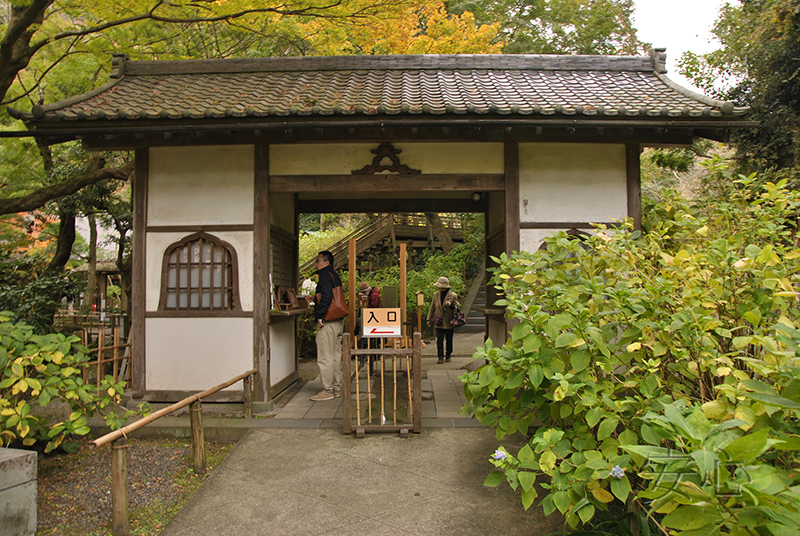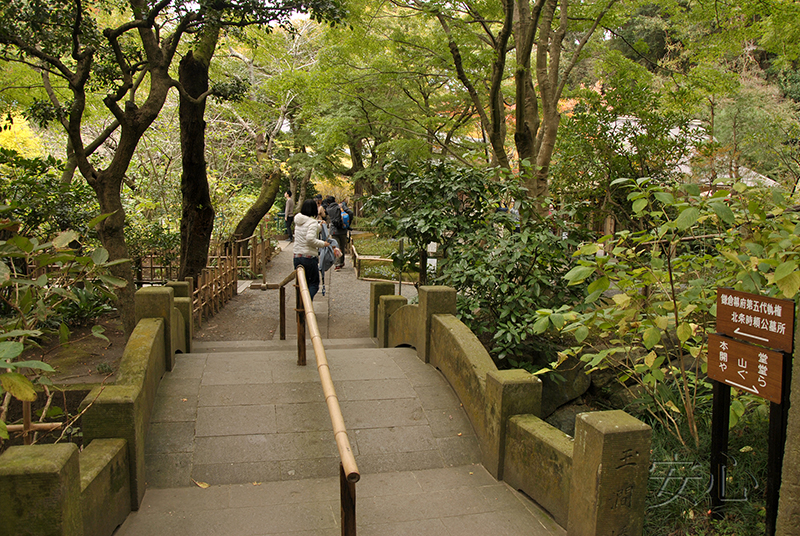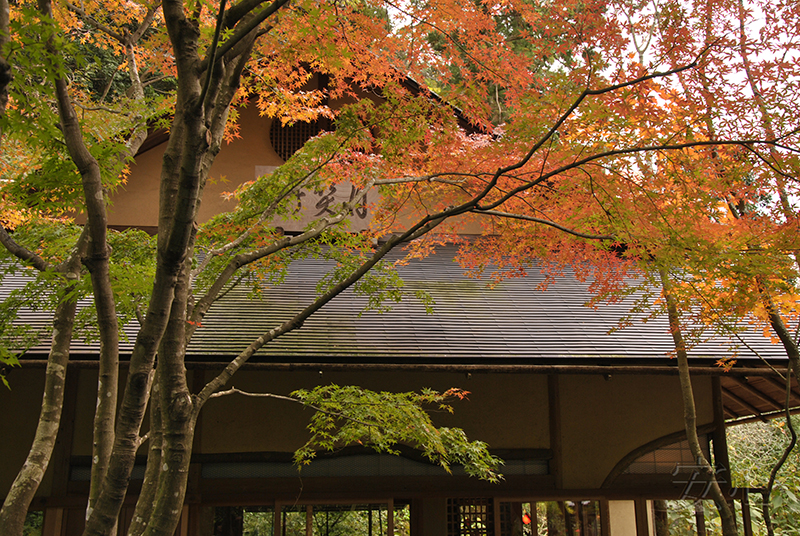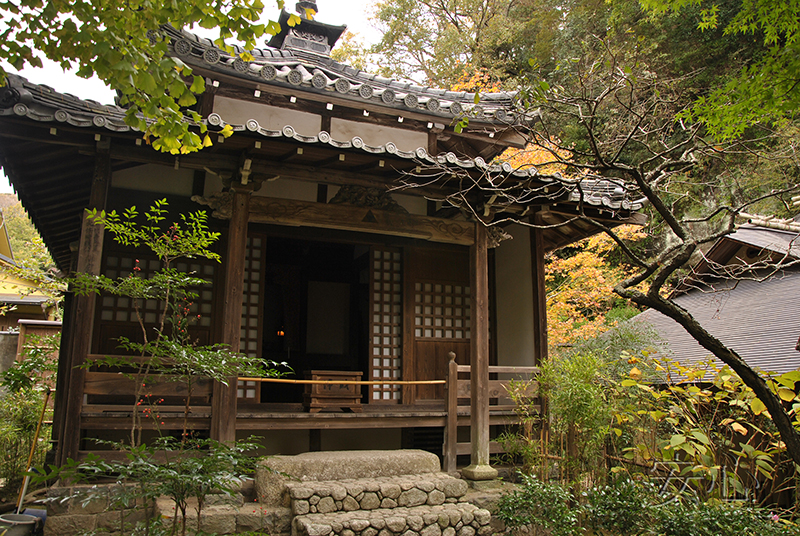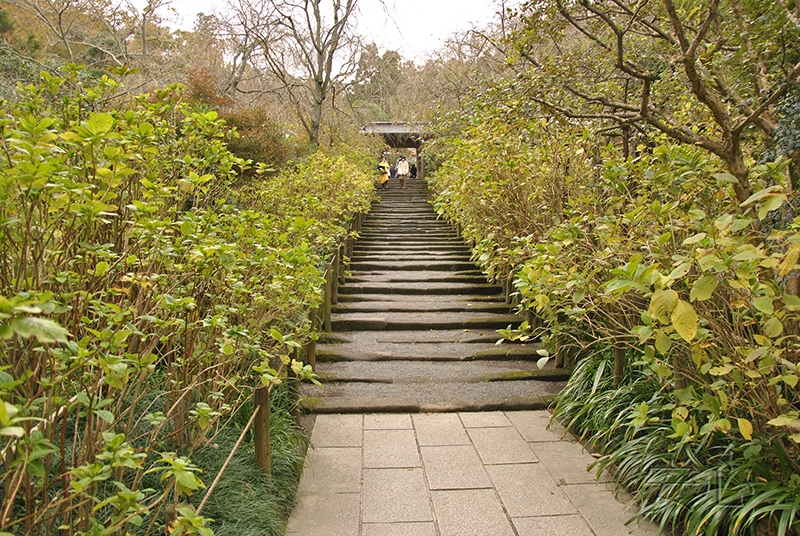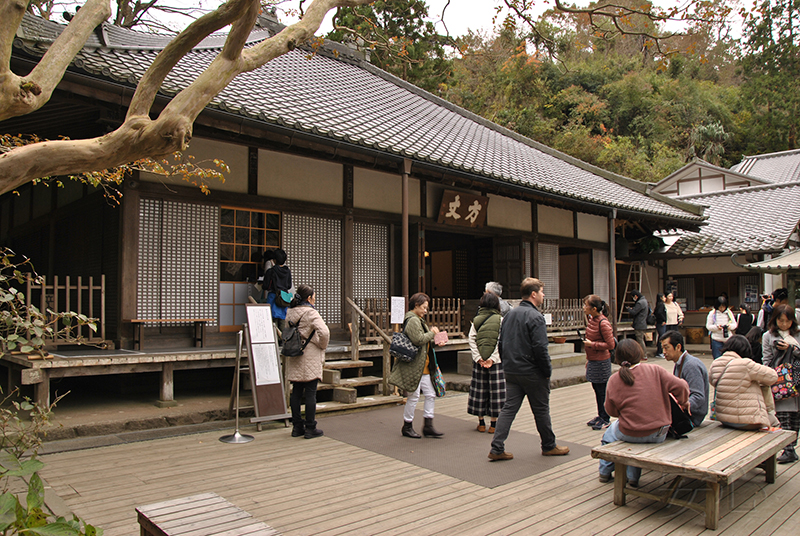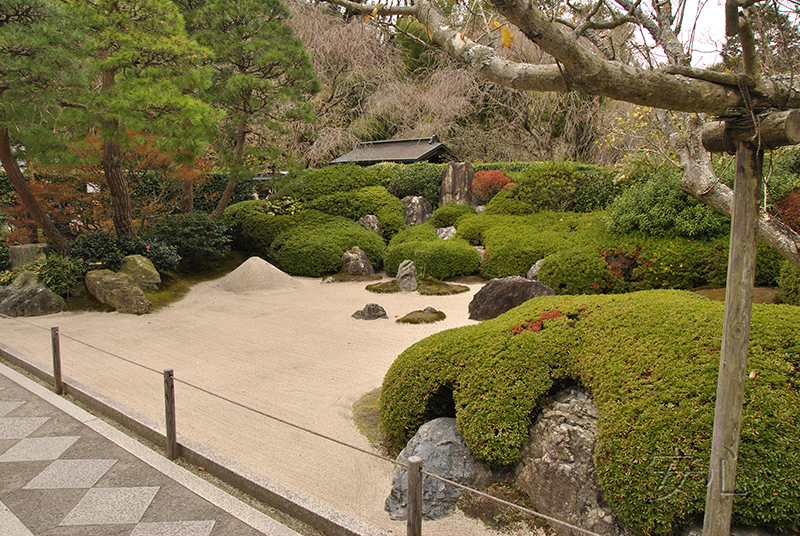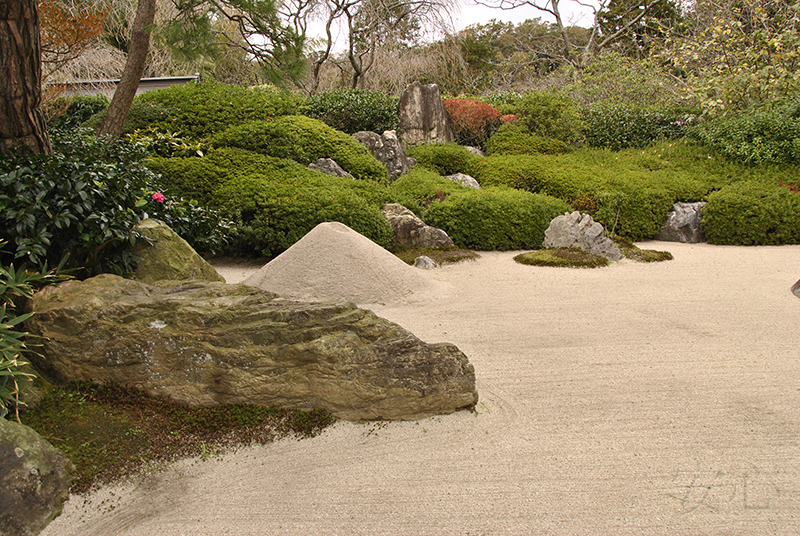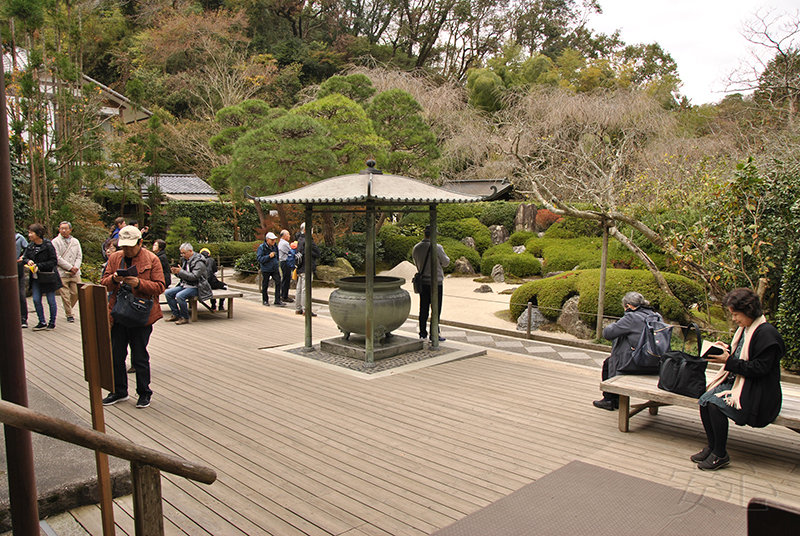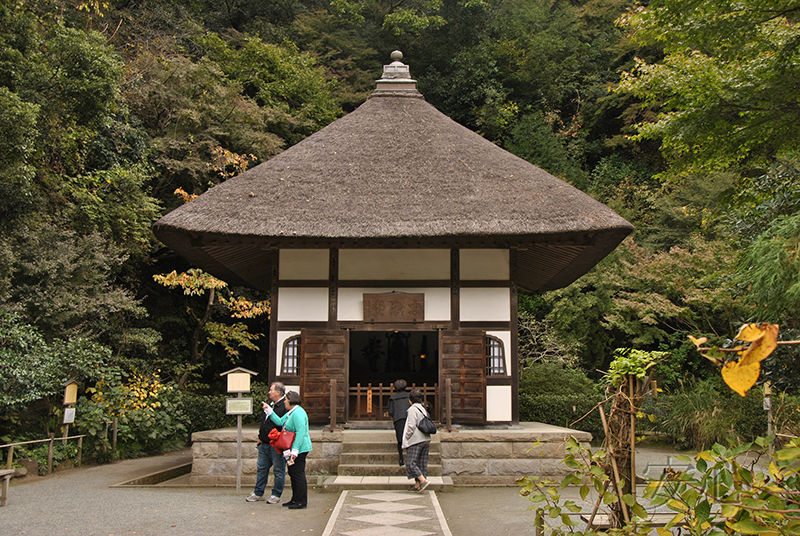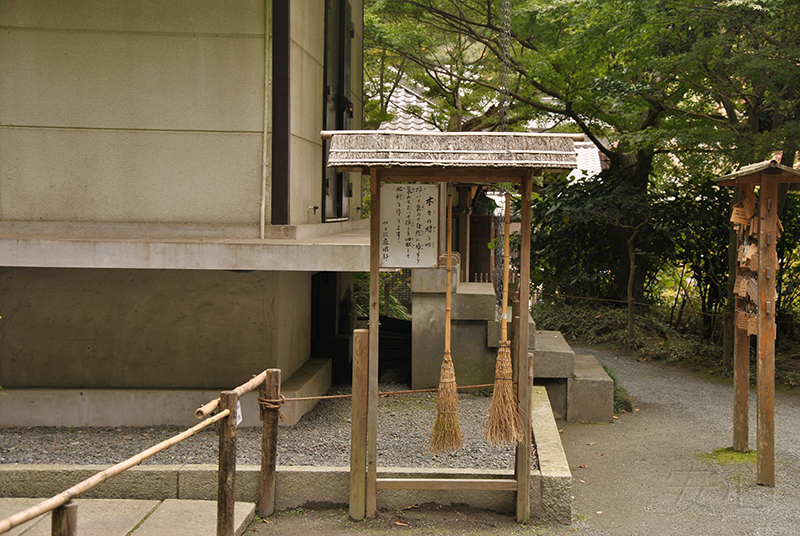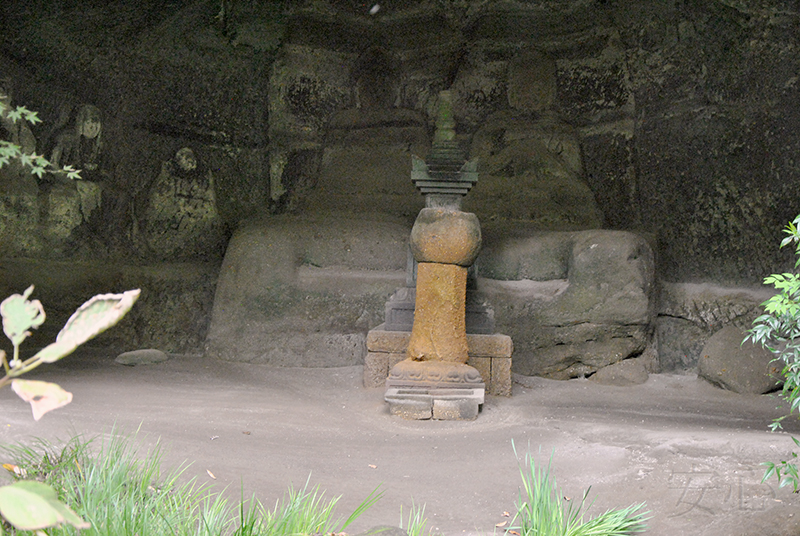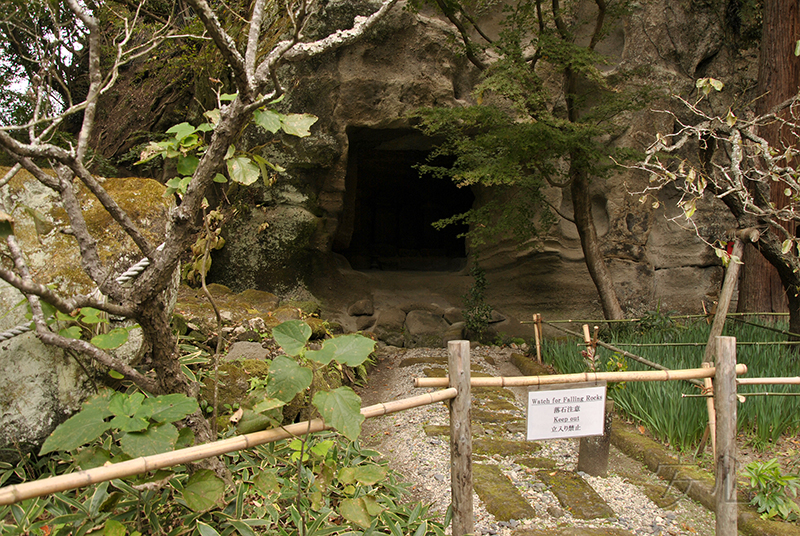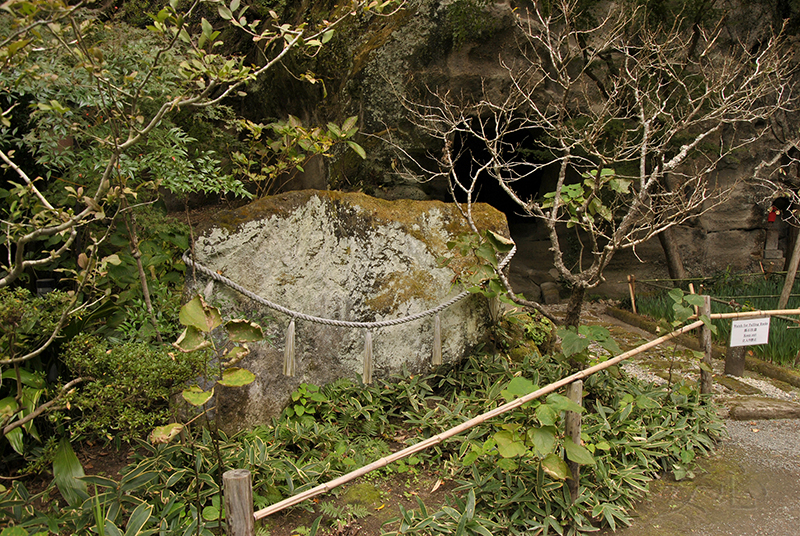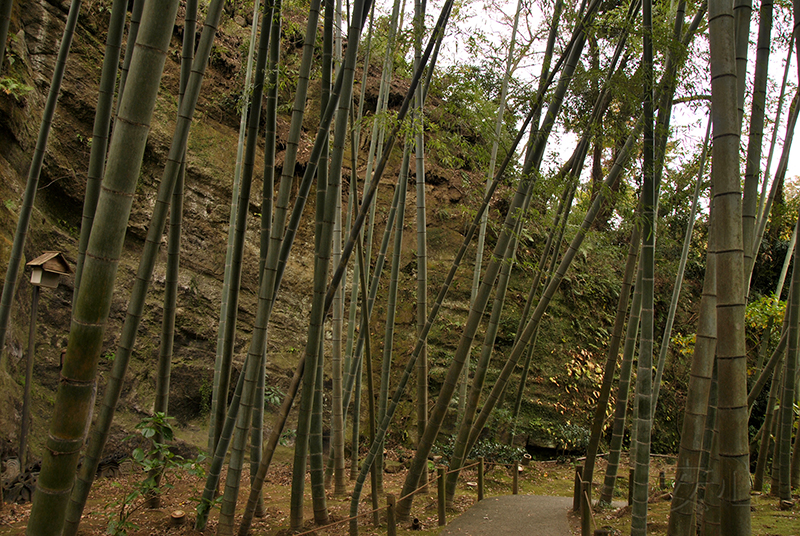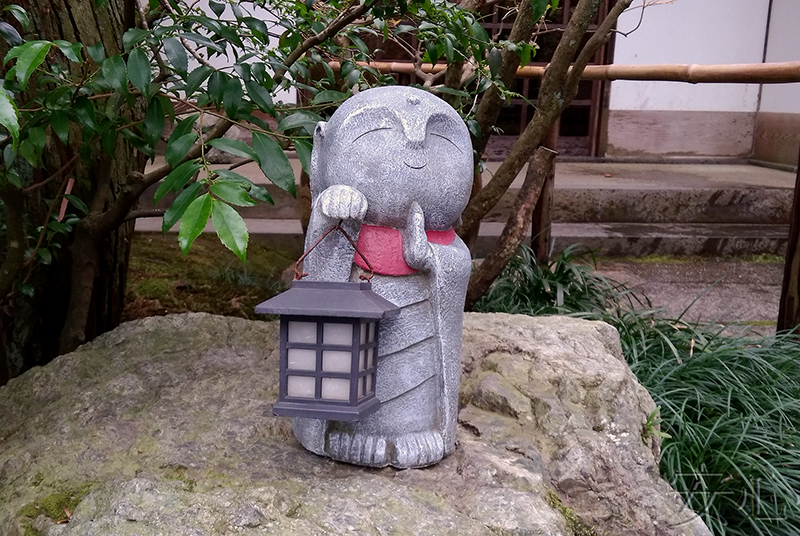
The gardens of Meigetsu-in Temple, Kamakura
Meigetsu-in was founded in 1160 by Yamanouchi Tsunetoshi for the repose of the soul of his father Toshimichi, who died in the Battle of Heiji the previous year. Originally it was Meigetsu-an, what means “Bright Moon Hermitage”. In 1256, Hojo Tokiyori chose this site for the construction of a Buddhist temple called Saimyoji, later Zenko-ji, and Meigetsu-an became a part of it. However, shortly after the Meiji Restoration (1867), the Zenko-ji Temple was abolished, and today only Meigetsu-in remains.
The temple is famous by its hydrangeas. These shrubs meet visitors already at the entrance. Unfortunately, in November there is almost no flowering.
Opposite the entrance is a stairs through a ravine.
But, before moving on, it is worth looking into the small garden on the left. A wide road leads to it.
True, we could admire the teagarden only through the fence, but maples against the backdrop of the tea house looked amazing in November! The name of the tea house is quite poetic - Gesshoken, "Moon-smiling".
Nearby is the grave of Hojo Tokiyori. He lived here the last years of his life. Despite his successful political career, Tokiyori has always had interest in Zen. In 1253, he founded Kento-ji, the first monastery in Japan dedicated to Zen training. At the end of his life, Tokiyori completely stopped his political activities and devoted himself to serving in Saimyo-ji. Unfortunately, he died quite early, at the age of 37.
The path to the main garden is a wide staircase made of weathered Kamakura stones. It is framed on both sides by hydrangeas. When they bloom, the spectacle is probably amazing!
Right behind the gate is a zigzag path leading to the main building.
There is a garden in front of Hojo. But it was created not so long ago, in the second half of the 20th century. Its author is the talented designer Sone Saburo. The concept of the garden expresses a Buddhist view of the world. In the middle of the sea of white sand, Mount Sumeru rises (the sacred mountain in Hinduism and Buddhism, which is the center of all universes). On the left side it ends with a stone composition depicting the Crane, and on the right side we can see the Turtle.
We can view the garden only on one side, the rest sides are either blocked by plants.
From the main temple there is a way to another garden, which is famous for its irises. But you can see it only partially, through the round window. They say that the entrance to the garden is opened during the flowering of irises and in late November - early December, in the season of red leaves. However, on November 20, 2019, the garden still was closed.
If you go from the main temple to the left, you will find in a small courtyard. Here is the Founder's Hall (Soyu-do). It was built in 1380. In Soyu-do enshrined wooden sculpture of Zen master Misshitsu Shugon. To the left of the sculpture are the mortuary tablets of the past resident priests of Saimyoji, Zenkoji and Meigetsu-in.
There is also a Kame-no-I well (Jug Well). The Kamakura area is not traditionally blessed with good water. And this well is among the top ten wells with a large supply of clean water. Dug vertically through the rock, the well receives its name from the fact that it bulges like a ceramic water jug.
The Founder’s Hall, as well as the Jug Well, are surrounded by a cliff. At the foot of the cliff we saw a cave, or Yagura (Arhat Cave). The term “yagura” refers to the cave tombs built commonly in medieval Kamakura. Seven meters in width, three in height and six in depth, the Meigetsu-in yagura is one of the largest remaining in this city.
Figures of Shaka Nyorai (Shakyamuni), Taho Nyorai and the 16 Arhats are carved in relief on the walls, and at the center is a hogyointo gravestone belonging to Uesugi Norikata, restored of Meigetsu-in. In front of the gravestone is an incense burner of the Zen Buddhist style.
Legend has it that the yagura was built in 1160 by Yamanouchi Tsunetoshi as the tomb for his father, and the Uesugi Norikata erected his own gravestone here some 220 years later. But time has erased the inscriptions in the yagura and so the exact circumstances of construction remain a mystery.
When I chose places that I would like to visit in Japan, my attention was attracted, first of all, not by temples, but by gardens. And Meigetsu-in was very interesting to me for its dry garden. However, in this case, expectations were much higher than reality. Firstly, on the photo the garden seemed bigger than it really is. Secondly, during our visit, the garden was clearly not in the best shape: shrubs already needed to be cut, and some plants in the background without foliage seemed completely unformed. And, of course, the closed indoor garden of irises (although, in theory, it should be open at this time) also did not contribute to a good impression. However, we really liked the temple, and especially we liked the place where it is located. It should be noted that many temples of Kamakura are located in the mountains, and this feature gives them special significance and charm. It's like you're moving in time...
Garden Information:
Address: 189 Yamanouchi, Kamakura, Kanagawa Prefecture 247-0062, JAPAN
Opening hours: from 9 a.m. to 4 p.m.
anshin©2011All rights reserved. When using the materials of the site, reference is obligatory.
Proposals for co-operation, as well as comments and suggestions on the site please send to the address: anshinsad@gmail.comtel: +7 (965) 121-80-60, 10am-20pm
